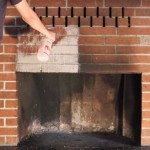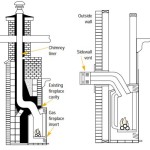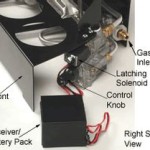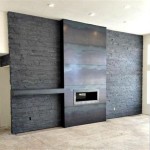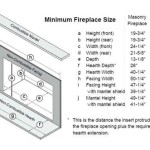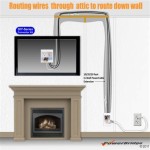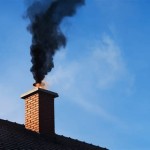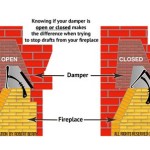Cast Iron Gas Fireplace Starter: An Efficient and Durable Ignition Solution
Gas fireplace starters represent a crucial component in converting traditional wood-burning fireplaces into more convenient and cleaner-burning gas-assisted hearths. While various materials exist for these starters, cast iron offers a compelling combination of durability, heat resistance, and longevity, making it a popular choice for homeowners seeking a reliable and efficient ignition solution. This article delves into the characteristics of cast iron gas fireplace starters, highlighting their benefits, considerations for installation and use, and overall value proposition.
The primary function of a gas fireplace starter is to quickly and reliably ignite wood logs within a fireplace. Instead of relying solely on kindling and paper, which can be time-consuming and messy, a gas starter introduces a controlled flow of natural gas or propane directly under the wood. This gas is then ignited, creating a robust flame that readily catches the wood. Once the wood is burning sufficiently, the gas supply is typically turned off, allowing the fire to burn naturally.
Cast iron is a ferrous alloy known for its high strength, excellent heat retention, and resistance to deformation at high temperatures. In the context of a gas fireplace starter, these properties are particularly advantageous. The repeated exposure to intense heat generated by the gas flame necessitates a material that can withstand thermal stress without warping or cracking. Cast iron's inherent durability minimizes the risk of failure, ensuring a longer lifespan compared to starters made from less robust materials.
Superior Heat Resistance and Retention
The ability of cast iron to withstand high temperatures is paramount for a gas fireplace starter. The direct flame impingement constantly subjects the starter to extreme heat. Materials like thin-walled steel or less heat-resistant metals are prone to premature degradation, leading to cracks, warping, and eventual failure. Cast iron, however, maintains its structural integrity even under prolonged exposure to high temperatures. This resistance to thermal stress translates to a longer-lasting and more reliable starter.
Furthermore, cast iron's excellent heat retention properties contribute to more efficient wood ignition. As the gas flame heats the cast iron body, the material absorbs and radiates heat back onto the wood logs. This radiant heat accelerates the drying and ignition process, requiring less gas and shortening the startup time. The retained heat also helps maintain a consistent flame, promoting more even burning of the wood, particularly during the initial stages of the fire.
The design of a cast iron gas fireplace starter often incorporates features that maximize heat distribution. Strategically placed ports or openings allow the gas flame to reach a wider area of the woodpile, ensuring more even ignition. The mass of the cast iron itself also contributes to a more uniform heat distribution, preventing localized hot spots that could potentially damage the fireplace structure.
Durability and Longevity
The rugged nature of cast iron directly impacts the lifespan of the gas fireplace starter. Unlike lighter, more fragile materials, cast iron is less susceptible to damage from physical impacts and general wear and tear. Logs shifting within the fireplace, accidental bumps from fireplace tools, and even the repeated thermal cycling associated with firing up the gas starter all contribute to stress on the component. Cast iron's inherent strength allows it to withstand these stresses more effectively, extending its service life.
The inherent resistance to corrosion also plays a crucial role in the durability of cast iron. While cast iron can rust, the process is typically slower and less detrimental compared to other metals. Proper maintenance, such as occasional cleaning and inspection, can further minimize the risk of corrosion and ensure the continued functionality of the starter. A well-maintained cast iron gas fireplace starter can easily last for many years, providing a reliable ignition solution for countless fires.
The robust construction of a cast iron gas fireplace starter also reduces the likelihood of needing frequent replacements. This not only saves money in the long run, but also minimizes the disruption and inconvenience associated with replacing a failing component. The peace of mind that comes with knowing the starter is built to last is a significant benefit for homeowners.
Installation and Operational Considerations
Installing a cast iron gas fireplace starter typically involves connecting it to an existing gas line within the fireplace. This process requires careful attention to safety regulations and building codes. It is strongly recommended that a qualified professional, such as a licensed plumber or gas fitter, perform the installation to ensure proper connection, leak-free operation, and compliance with all applicable standards.
The operation of a cast iron gas fireplace starter is generally straightforward. A gas valve, typically located outside the fireplace or in a nearby control panel, regulates the flow of gas to the starter. Igniting the gas usually involves using a lighter or a built-in igniter button. Once the wood is burning sufficiently, the gas supply is turned off, allowing the fire to burn naturally. It is important to follow the manufacturer's instructions carefully and to never leave the gas running unattended.
Regular maintenance is essential for ensuring the continued safe and efficient operation of a cast iron gas fireplace starter. This includes periodic inspections for leaks, cracks, or other signs of damage. Cleaning the starter to remove any accumulated soot or debris can also help maintain optimal performance. If any issues are identified, it is crucial to address them promptly to prevent potential hazards or further damage to the starter or the fireplace itself.

Log Lighters Gas Starter Pipes Steel Cast Iron

How To Install A Log Lighter Fireplace Gas Starter Pipe

Gas Fireplace Starters In Chicago Capital Chimney Corp

Gas Fireplace Starters In Chicago Capital Chimney Corp

Cast Iron Log Lighter 12 Inch For Natural Gas

Real Fyre Lc 1 Cast Iron Fireplace Natural Gas Log Lighter

Black Cast Iron Fire Starter With Soapstone Woodland Direct

Empire Vfd30cc Spirit Vent Free Deluxe Cast Iron Stove

Stanbroil Universal Gas Log Lighter Starter With Mixer For Propane Wood Burning Fireplaces Outdoor

A Starter S Guide To Gas Fireplaces Renovating
Related Posts

